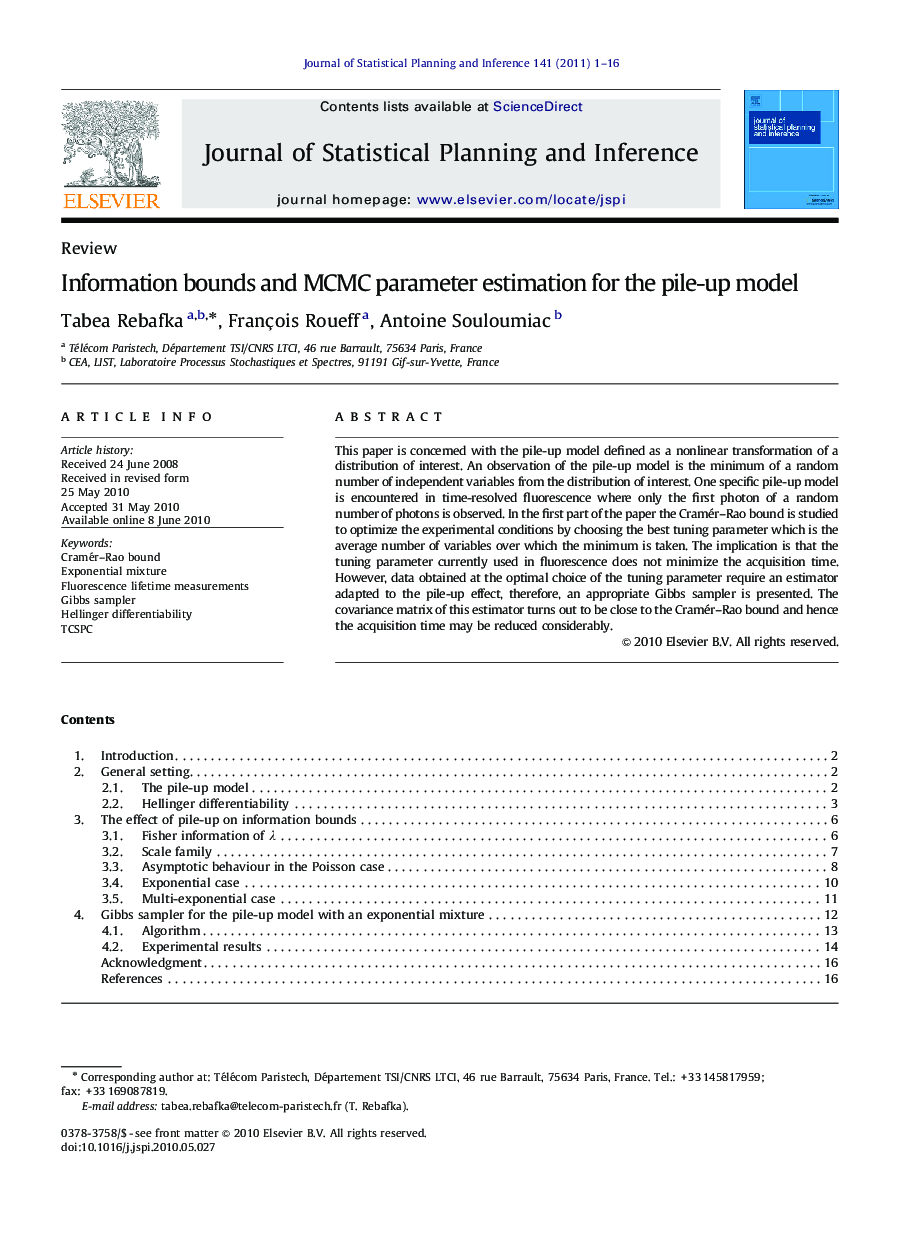| Article ID | Journal | Published Year | Pages | File Type |
|---|---|---|---|---|
| 1150103 | Journal of Statistical Planning and Inference | 2011 | 16 Pages |
Abstract
This paper is concerned with the pile-up model defined as a nonlinear transformation of a distribution of interest. An observation of the pile-up model is the minimum of a random number of independent variables from the distribution of interest. One specific pile-up model is encountered in time-resolved fluorescence where only the first photon of a random number of photons is observed. In the first part of the paper the Cramér-Rao bound is studied to optimize the experimental conditions by choosing the best tuning parameter which is the average number of variables over which the minimum is taken. The implication is that the tuning parameter currently used in fluorescence does not minimize the acquisition time. However, data obtained at the optimal choice of the tuning parameter require an estimator adapted to the pile-up effect, therefore, an appropriate Gibbs sampler is presented. The covariance matrix of this estimator turns out to be close to the Cramér-Rao bound and hence the acquisition time may be reduced considerably.
Keywords
Related Topics
Physical Sciences and Engineering
Mathematics
Applied Mathematics
Authors
Tabea Rebafka, François Roueff, Antoine Souloumiac,
